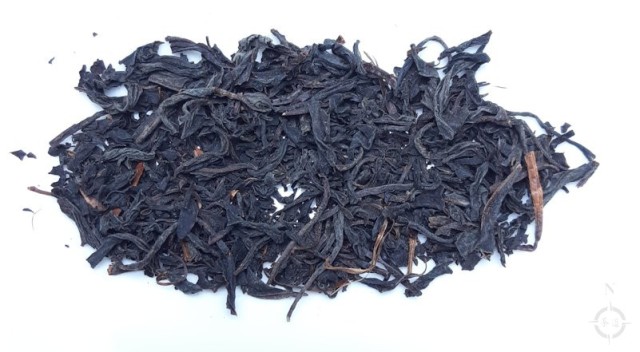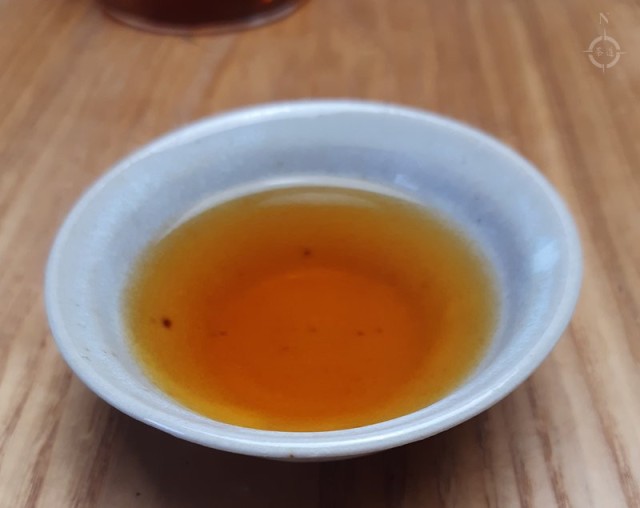
This is the other set of Japanese leaves that I bought in my recent four black teas mini-haul.
Just like the other half of the Japanese duo, Kocha Benifuki, this tea is made from raw material of the Benifuki varietal.
These leaves come from Satsuma, Kagoshima Prefecture, on the island of Kyushu.
The dry leaf’s aroma was mild in the extreme. All that greeted my nose when opening the caddy was a very faint suggestion of something vaguely vegetal. Once leaves and hot water had been introduced to each other all that changed, however. The warm, wet leaves smelled like an old fashioned candy store that had just taken delivery of a hundred bunches of assorted fresh flowers.
Initially I opted for a steeping method that was broadly similar to the one I had previously used with the Kocha Benifuki – 3 grams in a 200 ml pot, water at 100°C, and three infusions of 1, 1, and 1½ minutes duration.
This approach didn’t seem to work as well as it had with its sister tea. Even though the liquor dropped candied orange chunks and rose water into my cup, left a sweet, chalky mineral aroma in its wake, and had a slick, smooth, luscious body, I couldn’t help feeling I was still missing something. This was compounded by the third, final infusion, which was rather flat and quite bitter.
It also felt as though the tea’s Assam like qualities were overly dominant, threatening to overpower the more subtle characteristics.
I decided to try again, and ploughed right on into a new session, this time dropping the water temperature down from boiling, and giving the leaf a little gong-fu love…
| Steeping method | |
| Water Used: | Filtered tap water |
| Weight of dry leaf: | 6 grams |
| Infusion style: | Gong-fu |
| Steeping vessel: | 150 ml porcelain gaiwan |
| Water temperature: | 95°C |
| No. & duration: | 7 infusions of 5, 10, 15, 20, 30, 40, and 60 seconds duration |
Oh yeah, now we’re talkin’…

The best bits of the Western style session were still present, but had been joined by a creamy nuttiness, and a papery woodiness almost reminiscent of shou Pu-erh. Best of all, the Assam-y tartness had been well and truly reined in, and reduced to a refreshing counterpoint nip.
It took a little longer for the body to show up, but by the 3rd. round the liquor was back to its lip sticking best.
I’d started this extended session stupidly early, well before breakfast, and having sipped a fair old bit of tea on an empty tummy was now starting to experience a surprisingly hard Qi bump. My digestive system was growling away, but I was pot committed, and pushed on until that 7th. steeping signalled the end of the session.

A large bowl of porridge soon soothed the alimentary complaints.
I’m glad I persevered with this tea – there’s some interesting things going on in your cup when you steep these leaves, and it was well worth the extra effort involved to find out where they were hiding.
It’s also made me more determined to find time to re-visit Kocha Benifuki and see how well that responds to a little gaiwan action.
Watch this space, etc…

Every Wakocha I have tried has been really interesting. I enjoy hearing your experiences as well. I haven’t had the Satsuma yet, so that’s something new I will need to try.
LikeLiked by 1 person
Yes, they really are fascinating teas.
Glad you enjoy reading about my encounters with them!
LikeLiked by 1 person
Pingback: 2020 – My Year In Tea | Northern Teaist